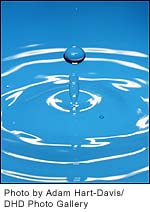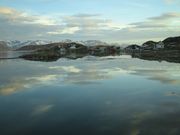 Alternatives mix could improve current water supply, says report
Alternatives mix could improve current water supply, says report
Adoption of a mix of water supply, including alternative systems such as desalination and water reuse, may provide a better and more flexible solutions than current systems.
This is the conclusion of a study carried out by the Department of Environmental Engineering in the University of Denmark. M Rygaard, PJ Binning and HJ Albrechtsen published the study's results in a paper Increasing urban water self-sufficiency: new era, new challenges in the January 2011 issue of the Journal of Environmental Management.
Based on 113 cases and 15 in-depth case-studies, solutions used to increase water self-sufficiency in urban areas were analysed. The main drivers for increased self-sufficiency were identified to be direct and indirect lack of water, constrained infrastructure, high quality water demands and commercial and institutional pressures.
Case studies demonstrated increases in self-sufficiency ratios to as much as 80% with contributions from recycled water, seawater desalination and rainwater collection.
Direct lack of water caused by droughts or population growth was a major instigator, the study found, as is infrastructure, for example, when old pipe systems cause bottlenecks in water supply. Another driver is the demand for high-quality pure water, such as in the electronics industry.
The researchers then selected 15 case studies, with self-sufficiency values ranging from between 15% to 80%, and analysed the different techniques to improve self-sufficiency.
The research concludes that no single technique will relieve problems in water supply. It suggests that the best solution may be to diversify and use several different techniques to overcome the different challenges. Wastewater reclamation and desalination may be reliable and stable, but rainwater collection may be more acceptable to the public and less costly.
The desire for self-sufficiency is a major trend and driver for new technologies and concepts in modern water supplies. Technologies like wastewater reclamation and desalination are attractive because of their reliability and stability, and rainwater collection can decrease pressures on other water resources. They will become increasingly common as water utilities seek more secure solutions by diversifying their approaches to water supply.
 you are not logged in
you are not logged in





